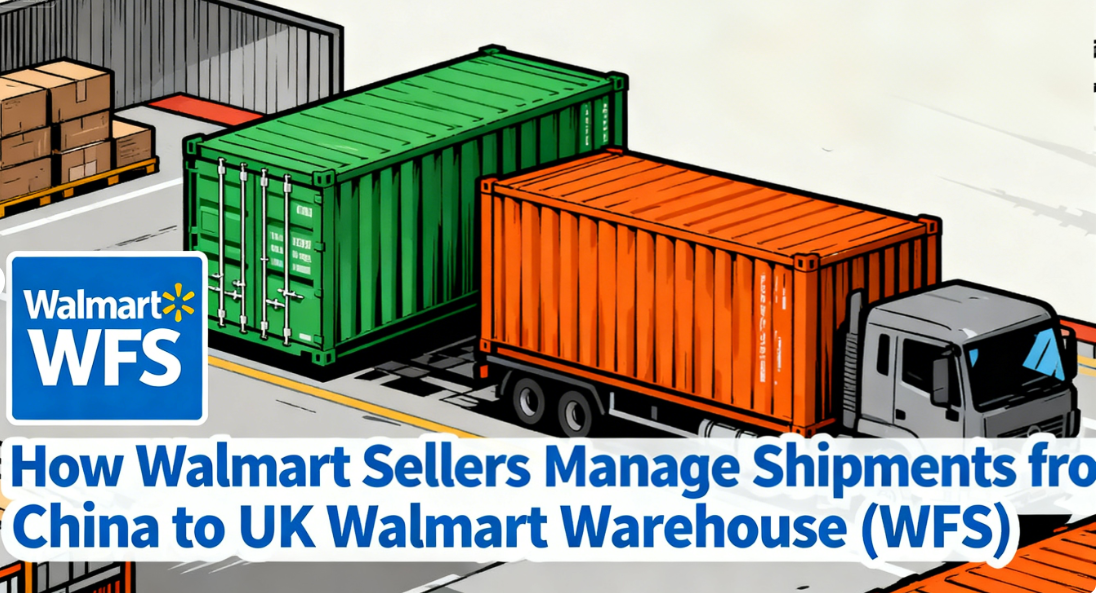Login
How Walmart Sellers Manage Shipments from China to UK Walmart Warehouse (WFS)

In the fast-paced world of cross-border e-commerce, effectively managing shipments from China to the UK Walmart Warehouse (WFS) is crucial for sellers looking to tap into the growing market. For Walmart sellers, streamlining logistics not only enhances customer satisfaction but also optimizes operational efficiency. In this blog, we will explore the essential steps and best practices Walmart sellers can adopt to manage their shipments effectively.
Understanding the Shipping Process
The shipping process from China to the UK involves multiple stages, each critical to ensuring that products arrive on time and in good condition. Here are the key steps:
1. Selecting a Reliable Freight Forwarder
Choosing a dependable freight forwarder is one of the most important decisions a seller can make. A reliable partner will have expertise in international shipping regulations, customs clearance, and logistics management. Look for a freight forwarder that specializes in e-commerce and has a solid track record of shipping to the UK. They can help navigate the complexities of shipping documentation and compliance with UK regulations, ensuring smooth transportation of goods.
2. Understanding Customs Regulations
Navigating customs regulations is vital for avoiding delays and additional costs. Sellers must ensure that all necessary documentation—such as invoices, packing lists, and customs declarations—is accurate and complete. Understanding the UK’s customs duties and taxes can also help sellers calculate the total landed cost of their products. This knowledge is essential for setting competitive prices while maintaining profitability.
3. Choosing the Right Shipping Method
Walmart sellers have several shipping options to consider, including air freight, sea freight, and express services. Each method has its pros and cons related to cost, speed, and reliability:
- Air Freight: Ideal for high-value or time-sensitive goods, air freight is the fastest but can be the most expensive option.
- Sea Freight: More economical for bulk shipments, sea freight takes longer but is generally more cost-effective for larger volumes.
- Express Services: Companies like DHL, FedEx, or UPS offer express shipping options that provide quick delivery, but at a premium price.
Selecting the right shipping method depends on the products being shipped, budget constraints, and delivery timelines.
4. Packaging and Labeling
Proper packaging is crucial for protecting products during transit. Sellers should adhere to Walmart’s packaging and labeling requirements to avoid issues upon arrival. This includes:
- Using sturdy packing materials to prevent damage.
- Clearly labeling packages with the correct shipping information and barcodes.
- Ensuring that products are compliant with UK safety standards.
5. Tracking Shipments
Implementing a robust tracking system allows sellers to monitor their shipments in real-time. Many freight forwarders offer tracking tools that provide updates on the shipment’s status. This transparency helps sellers respond promptly to any issues that may arise during transit.
6. Managing Inventory Levels
Effective inventory management is critical for maintaining a steady flow of products to the UK Walmart Warehouse. Sellers should monitor stock levels closely and plan their shipments to avoid stockouts or excess inventory. Utilizing inventory management software can streamline this process and provide insights into sales trends.
Conclusion
In conclusion, managing shipments from China to the UK Walmart Warehouse requires careful planning and execution. By selecting a reliable freight forwarder, understanding customs regulations, choosing the right shipping method, and maintaining proper packaging and tracking, Walmart sellers can enhance their logistical efficiency. This meticulous approach not only reduces costs but also improves customer satisfaction, ultimately driving sales and growth in the competitive cross-border e-commerce landscape.
By following these best practices, cross-border e-commerce sellers, manufacturing companies, and retailers can successfully navigate the complexities of shipping goods from China to the UK, ensuring their products reach international markets efficiently and effectively.
